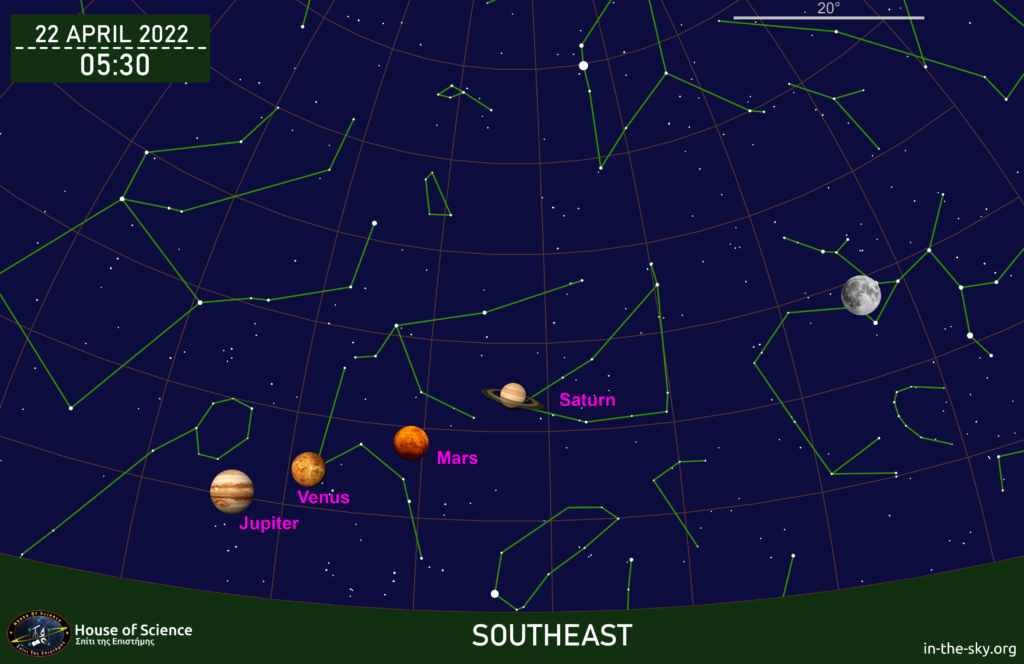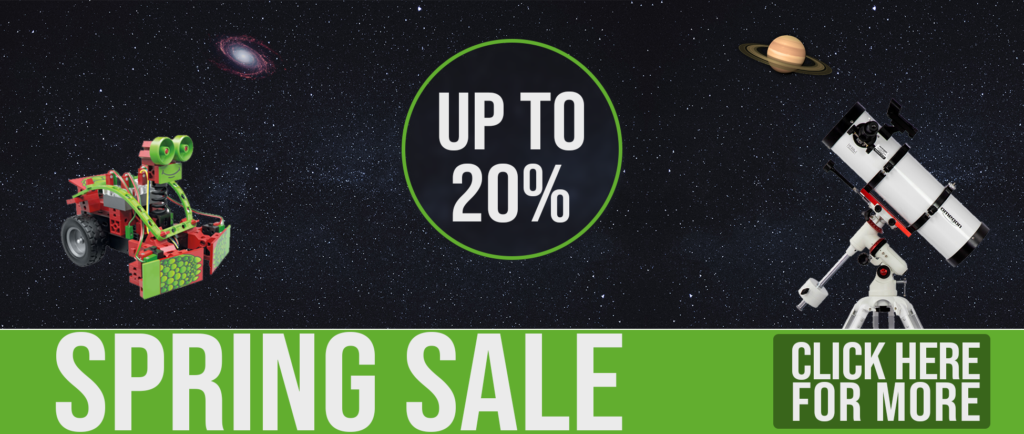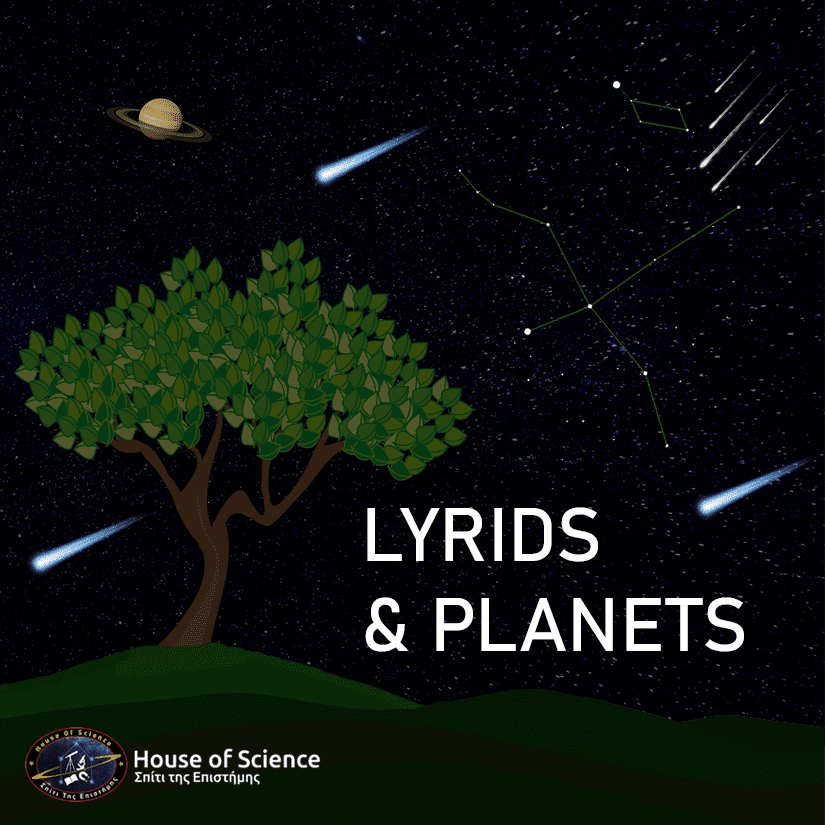
Dear friends of astronomy, we wish you a happy Easter, always with good health and clear skies. The Easter period is combined with visits to the villages, which will give us the opportunity to enjoy the sky away from the city lights.
Lyrids – Meteor shower
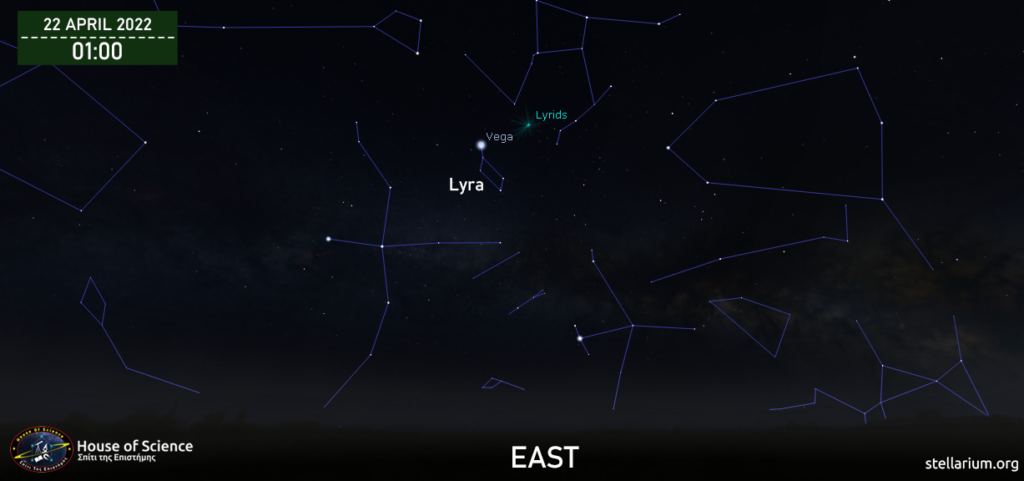
The peak of the phenomenon is observed on the 22nd of the month, but the Lyrids are practically observable from April 16 to April 26. The best times for observing the phenomenon are from 1.00 am to dawn, especially on nights when there is no Moon. Their name comes from the constellation Lyra, from which they appear to radiate.
How can this phenomenon be explained?
In reality, shooting stars are dust particles, left over from the huge tail of Comet Thatcher, no bigger than a grain of sand. These particles, when they enter the atmosphere, burn up due to friction and give this amazing glow in the sky. Every spring – specifically on 22 April – the Earth’s orbit is at the closest distance to the comet’s remnants, which is how this effect is caused.
How can we see the Lyrids?
To see the Lyrids we choose a clearing in a dark place away from the light pollution of the cities. We keep our gaze constantly directed towards the sky (a comfortable chair in an almost horizontal position may be necessary). We don’t turn on lights or look at our cell phones, we just relax and patiently enjoy the night sky.
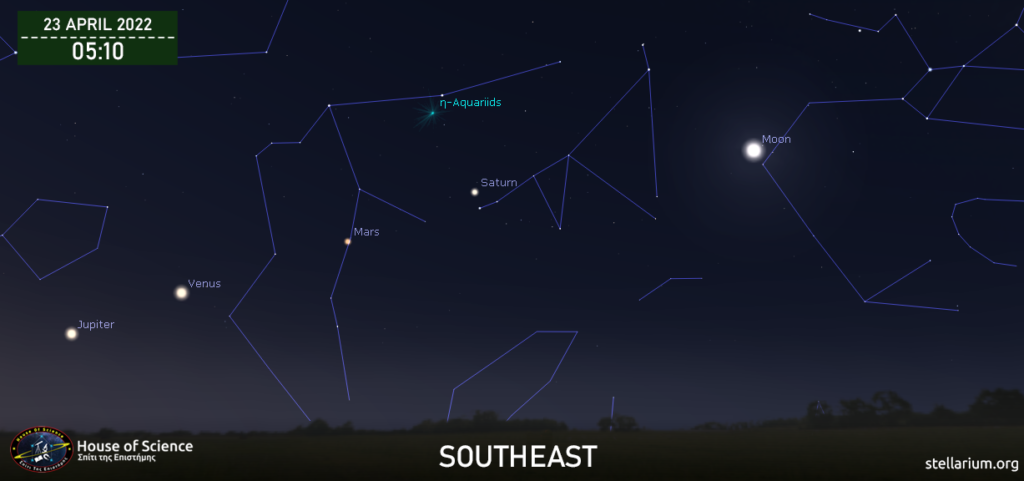
The planets in the morning sky
During the dawn hours we will be able to enjoy a beautiful scenery. Around 5.00 am the planets Saturn, Mars, Venus and Jupiter are simultaneously in the night sky. Observation can be done with the naked eye as these planets are relatively easy to see in the celestial haze. All we have to do to enjoy this scene is to look to the southwest just before sunrise (see Figure 2).
